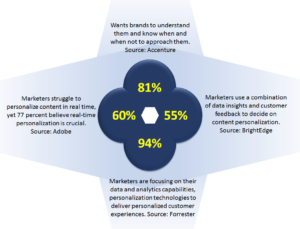Throughout the world, marketers are becoming more focussed on health. Be it energy, auto, chemicals or food, the focus is shifting to health and sustainability. Greater thrust on non-fossil energy sources, or cola majors moving from traditional beverages to health-based foods and beverages, are visible signs of the shift.
Pharma companies the world over, as also in India, are not far behind. Most are diversifying from chemical-based medicines into nutraceutical and wellness products. Today, most major Indian pharma companies have a nutraceutical or wellness division that produces supplements, ayurvedic & herbal products, fortified foods & beverages, functional foods, probiotic foods, energy drinks, etc. Research has shown that nutraceuticals are good for prevention of diseases, post-disease recovery, curbing deficiencies, supplementing nutrients and minerals, and better management of lifestyle diseases such as obesity, diabetes and cardiovascular diseases. Thus, nutraceuticals reduce the ill-effects of consuming pharmaceuticals. The companies are pitching for nutraceutical products with allopathic doctors too.
The awareness about the benefits of nutraceuticals is growing fast. Within a short span of 10-15 years, the annual domestic nutraceutical market has grown to Rs 30,000 crore, compared with the Rs 1,30,000 crore pharmaceutical market. According to Assocham, the nutraceutical market is expected to cross Rs 1,15,000 crore in the next 7-10 years. In addition to pharma companies, pure play domestic and international nutraceutical companies would also like to participate in this market with their unique plant-based products.
As these products are regulated by the Food Safety and Standards Authority of India, pricing is not an issue. There is also no person like a medical professional to take decision on behalf of a consumer and each person has the liberty to choose what he or she wants.
New Models in Digital Era
There will be a splash of online business models. We anticipate successful tie-ups between nutraceutical companies and established teams of nutritionists and dieticians for guiding consumers on the nutraceutical intake. We will also see start-ups becoming active with their apps and gadgets. Subscription-based models are expected to meet success and there will be specific packages for specific illnesses/conditions. Some of the models are as follows.
Wellness clinic model: Here, at a fixed rate of, say, Rs 3,000, a person will be able to take a package of benefits that includes nutritionist visits, health check-ups, diagnostic tests, disease management awareness programmes, etc.
Push model: The customer will be able to visit a nutritionist/dietician for six months by paying a subscription fee.
Conversational model: A customer will be able to converse with nutritionist/dietician through an app by paying a monthly amount.
Instant visit model: You could visit a nutritionist without waiting by paying a monthly subscription fee.
New Models in Digital Era
There will be a splash of online business models. We anticipate successful tie-ups between nutraceutical companies and established teams of nutritionists and dieticians for guiding consumers on the nutraceutical intake. We will also see start-ups becoming active with their apps and gadgets. Subscription-based models are expected to meet success and there will be specific packages for specific illnesses/conditions. Some of the models are as follows.
Wellness clinic model: Here, at a fixed rate of, say, Rs 3,000, a person will be able to take a package of benefits that includes nutritionist visits, health check-ups, diagnostic tests, disease management awareness programmes, etc.
Push model: The customer will be able to visit a nutritionist/dietician for six months by paying a subscription fee.
Conversational model: A customer will be able to converse with nutritionist/dietician through an app by paying a monthly amount.
Instant visit model: You could visit a nutritionist without waiting by paying a monthly subscription fee.
Other Gimmicks for Marketing
Virtual Reality (VR) & Augmented Reality (AI): There will be an opportunity for brand owners to be closer to consumers through VR headsets and make it a more engaging, interactive and personal experience. AR can help with blending of virtual objects such as brand image into something full of movement and wonder.
Phygital Marketing: In phygital, or physical + digital, a brand interacts with a customer in a physical location. Digital enhances the physical experience.
Referral & influencer marketing: A lot of nutra companies will use influencers to promote products on social media.
FMCG model: There will be promotions using coupons, contests, gifts.
Public relations (PR) & user generated content (UGC) marketing: Analysts predict good growth through PR and user generated content such as comments, reviews and images on social media. According to the Nielsen Consumer Trust Index, 92 per cent consumers trust UGC more than advertising as the former is not paid.
Multi-level marketing: The traditional Amway method is here to stay
Online marketing: Leverage of the good old online marketing through e-mail, social media, display advertising and search engine optimisation.
The writer is CMD, Interlink Marketing Consultancy, and Hon Secretary, HADSA
********

